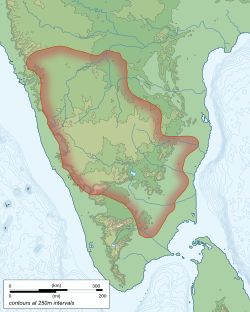
Back هويسالا Arabic هويسالا ایمپیراتورلوغو AZB হৈসল সাম্রাজ্য Bengali/Bangla Hoysala Catalan Hoysala German Hoysala Spanish Hoysala Inperioa Basque امپراتوری هویسالا Persian Hoysala Finnish Hoysala French
Hoysala Kingdom | |||||||||||||
|---|---|---|---|---|---|---|---|---|---|---|---|---|---|
| 1000–1346 | |||||||||||||
 Hoysala kingdom, c. 1050 – c. 1355 | |||||||||||||
| Capital |
| ||||||||||||
| Common languages | Kannada Sanskrit | ||||||||||||
| Religion | Hinduism Jainism | ||||||||||||
| Government | Monarchy | ||||||||||||
| King | |||||||||||||
• 1026–1047 | Nripa Kama II | ||||||||||||
• 1047–1098 | Vinayaditya | ||||||||||||
• 1098–1102 | Ereyanga | ||||||||||||
• 1102–1108 | Veera Ballala I | ||||||||||||
• 1108–1152 | Vishnuvardhana | ||||||||||||
• 1152–1173 | Narasimha I | ||||||||||||
• 1173–1220 | Veera Ballala II | ||||||||||||
• 1220–1234 | Veera Narasimha II | ||||||||||||
• 1234–1263 | Veera Someshwara | ||||||||||||
• 1263–1292 | Narasimha III | ||||||||||||
• 1292–1342/43 | Veera Ballala III | ||||||||||||
• 1342/43-1346 | Veera Ballala IV | ||||||||||||
| History | |||||||||||||
• Established | 1000 | ||||||||||||
• Disestablished | 1346 | ||||||||||||
| |||||||||||||
| Part of a series on the |
| History of Karnataka |
|---|
 |
The Hoysala Kingdom was a Kannadiga power originating from the Indian subcontinent that ruled most of what is now Karnataka between the 10th and the 14th centuries. The capital of the Hoysalas was initially located at Belur, but was later moved to Halebidu.
The Hoysala rulers were originally from Malenadu, an elevated region in the Western Ghats. In the 12th century, taking advantage of the internecine warfare between the Western Chalukya Empire and Kalachuris of Kalyani, the Hoysalas annexed areas of present-day Karnataka and the fertile areas north of the Kaveri delta in present-day Tamil Nadu. By the 13th century, they governed most of Karnataka, north-western Tamil Nadu and parts of western Andhra Pradesh in the Deccan Plateau.
The Hoysala era was an important period in the development of South Indian art, architecture, and religion. The empire is remembered today primarily for Hoysala architecture; 100 surviving temples are scattered across Karnataka.
Well-known temples which exhibit what the historian Sailendra Sen has called "an amazing display of sculptural exuberance" include the Chennakeshava Temple in Belur, the Hoysaleswara Temple in Halebidu, and the Chennakesava Temple in Somanathapura.[1] These three temples were inscribed as UNESCO World Heritage Sites in 2023.[2] The Hoysala rulers also patronised the fine arts, encouraging literature to flourish in Kannada and Sanskrit.
- ^ Sen 2013, pp. 58–60.
- ^ UNESCO World Heritage Convention. "Sacred Ensembles of the Hoysalas". UNESCO. © UNESCO World Heritage Centre 1992-2023. Retrieved 3 October 2023.